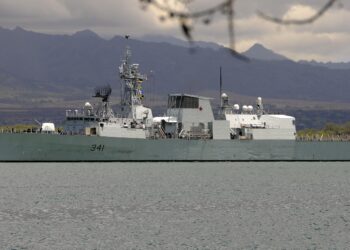DARPA, The Defense Advanced Research Projects Agency (DARPA) Affordable Moving Surface Target Engagement (AMSTE) program has demonstrated for the eighth consecutive time the ability to precisely engage moving surface targets using precision-guided weapons. The weapon used this time was a modified live Joint Direct Attack Munition (JDAM).
On October 7, the AMSTE team successfully demonstrated the ability to track a moving target from long range and to use this tracking information to continuously direct a JDAM weapon in flight to attack that target. The recent experiment tested the ability of an integrated system to track targets in more realistic target scenarios using feature-aided tracking tools to support long-term track maintenance of high-value targets.
Eighteen different military target vehicles were maneuvered through a complex, three-hour scenario to test the improved tracking capability of the AMSTE system. Preliminary results included an operator-assisted track of a nominated target for longer than 40 minutes.
The flight test was conducted at Eglin Air Force Base, Fla. In the demonstration, realtime information on a moving target was developed from standoff radar sensors, and the resulting tracking data was relayed from a Joint STARS aircraft directly to the modified JDAM in flight. The JDAM used in the test was a standard 2,000-pound version of the bomb with a JDAM tail kit modified to include a low-cost data link.
The JDAM was released from an F-16 fighter at an altitude of 20,000 feet and was directed to a specific target, a remotely controlled M-60 tank, moving in a column of traffic crossing the range at 18 miles per hour. The modified JDAM corrected its aim point continuously in flight and scored a direct hit on the moving tank. JDAMs were used effectively against fixed targets in Operation Iraqi Freedom. The technique demonstrated in this test will permit inventory weapons like the JDAM to be employed in a new role to precisely engage moving surface threats.
DARPA









